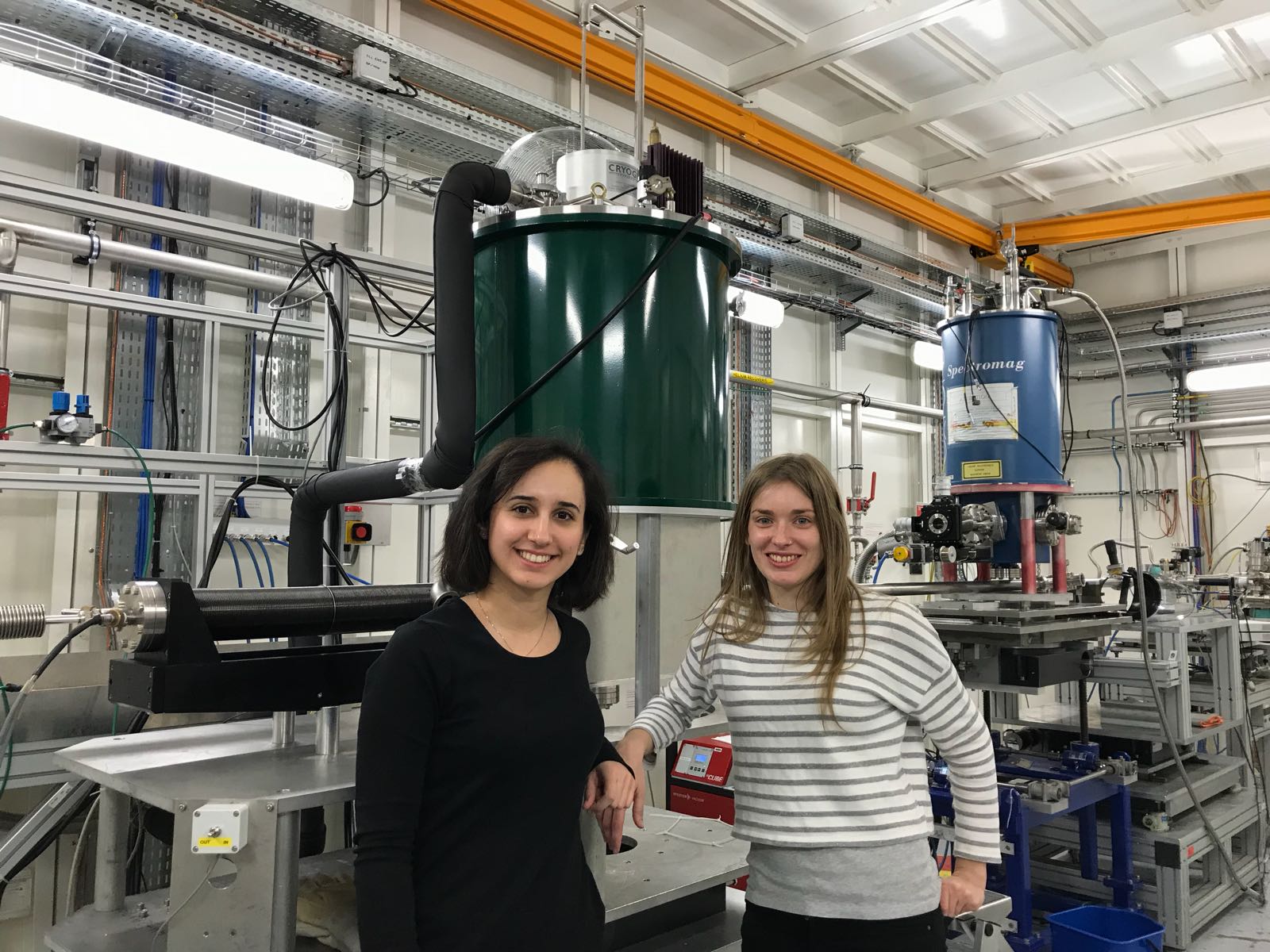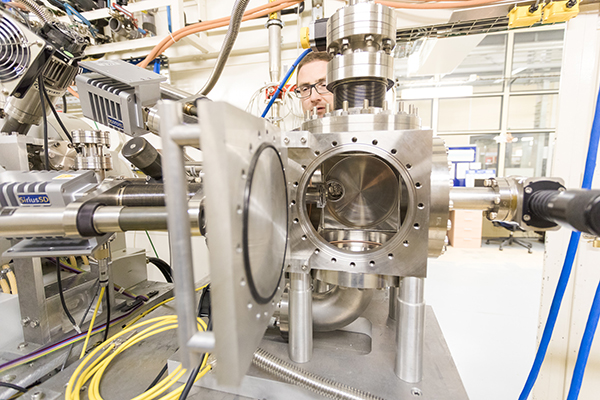- Home
- News
- General News
- Scientists design...
Scientists design magnets with outstanding properties
30-10-2020
An international team of researchers led by the Centre de Recherche Paul Pascal (UMR 5031, CNRS -University of Bordeaux) has discovered a novel way to design magnets with outstanding physical properties, which could make them complementary to, or even competitive with traditional inorganic magnets, which are widely used in everyday appliances. The researchers used ID12 and BM01 beamlines at the ESRF to characterise their new magnets. Their results are published today in Science
Share
Magnets are an integral part of our everyday life and are found in household appliances, motors, computers, as well as medical and electronic devices. The demand for new magnetic materials has significantly increased in recent years. The majority of such materials are inorganic, and can be used at room temperature. In 2019, the global market for inorganic magnets was worth US$ 19.5 billion, and is expected to reach US$ 27.5 billion by 2025 (www.imarcgroup.com). However, inorganic magnets are expensive to fabricate and access to their constituent elements is often limited.
For decades, chemists have been trying to fabricate high-performance magnets at low energy and financial cost using molecular units of abundant metal ions and inexpensive organic ligands. So far, very few molecule-based magnets operating at room temperature have been reported, and the few known examples cannot store information.
A team led by the CNRS researcher Rodolphe Clérac at the University of Bordeaux, in collaboration with the ESRF, has found a new chemical strategy to design magnets with physical properties such as high operating temperature, large coercivity (i.e. the ability to store information) and low density. “These magnets will complement, and even compete with the traditional inorganic magnets”, explains Rodolphe Clérac. He adds that “their properties are much better than any metal-organic magnet that has been made before”. The new magnets operate up to 242 °C (exceeding the current record for coordination networks by more than 100 °C), exhibit large room temperature coercivity up to 7500 Oe (2 orders of magnitude higher than previously reported molecule-based systems) and are lightweight (around 1.2 g cm–3 vs. more than 5 g cm–3 for traditional inorganic magnets).
 |
|
P. Perlepe and I. Oyarzábal (right) in the experimental hutch of ID12. Credits: R. Clérac. |
In addition to the outstanding properties, the process of synthesising these magnets is relatively simple. The team coupled a radical (organic molecule that carries a spin) and a spin-carrying metal ion to generate a very strong magnetic interaction. “This synthetic strategy is relatively straightforward, so it could easily be applied to many metal-organic materials, for conversion into metal-organic magnets”, says Itziar Oyarzabal, a postdoctoral researcher developing this project, and co-corresponding author with Rodolphe Clérac.
Using the BM01 and ID12 beamlines at the ESRF, the researchers were able to characterise these new magnets. “The ESRF has been key to understand these materials, with regards to their structure as well as their magnetic properties”. The experiment to determine the basic structure of the materials, on BM01, was very challenging, as the compounds are very air-sensitive and poorly crystalline. Despite these obstacles, they managed to obtain a structural model on a powder sample using X-ray diffraction.
 |
|
|
Fabrice Wilhelm, scientist of ID12 and part of the team, in the experimental hutch of the beamline. Credits: P. Jayet. |
To probe the electronic and magnetic properties of these magnets in an element-selective manner, the team used beamline ID12. Andrei Rogalev, the scientist in charge of beamline ID12, explains: “Our team at ID12 and Clérac’s team at the Centre de Recherche Paul Pascal have a long-standing and fruitful collaboration, with many joint publications. So it was very natural for us to join forces to study these new magnets, making full use of the unique 17 Tesla set-up for hard X-ray magnetic circular dichroism measurements”.
“When you are injecting electrons into a material, you don’t really know whether they will reside on the organic part or on the metal. X-ray spectroscopic measurements at ID12 helped us to clarify the local electron distribution”, adds Rodolphe Clérac. He concludes: “Without the studies performed at the ESRF, we couldn’t have published our findings. To be honest, I hadn’t considered applications of my research before this work, as my team and I do fundamental science, but it is now clear to me that we can potentially use these materials in magnetoelectronic, magnetic sensors and recording technologies, especially when the weight is an issue, for example, in smartphones or satellites”, he concludes.
REFERENCE:
Text by Montserrat Capellas Espuny
Top image: Pictorial representation of the molecule-based magnet and its magnetic properties. Credits: R. Clérac.



